The addition of car-based engine technology has made the Dulcati Multistrada 1200 one of the smoothest and most efficient big-bore touring motorcycles on the planet.
Ducati calls it Desmodromic Variable Timing or DVT which is an unfortunate acronym, but a fortunate development for riders.
It is commonly found in cars and varies the timing of the exhaust and inlet valves for maximum efficiency.
In the Ducati system, the desmodromic valves are lifted mechanically rather than on springs.
What it means for you, the rider, is a boost in power and torque, improved fuel economy and reduced emissions.
And while it won’t affect the lengthy 30,000km intervals for valve-clearance adjustment, it does eradicate the nasty throttle snatch previously felt in the Multistrada.
The basic model is $23,990, while the Multistrada S in Ducati Red is $27,990 and in “alpine white” it’s $28,490.
I recently road-tested a red Multistrada S around Sydney traffic, on the highways and into the twisting roads of the Blue Mountains.
After a combination of hard riding and freeway touring, the powerful tourer returned fuel economy figures of just 4.5L/100km which is surprisingly less than the claimed economy.
That’s even more frugal than I’ve experienced on the lean-burning BMW R 1200 GS.
Many riders may not be concerned about fuel economy, but it does mean improved range from the 20-litre fuel tank.
More importantly DVT in the Multistrada’s Testastretta L-twin engine boosts power from 111kW (150hp) to 119kW (160hp) and torque from 124Nm (91.8lb ft) to 136Nm (100lb ft).
It’s more oomph that you can really feel, especially through the mid-range, not so much down low.
There is now even more urgency in the throttle, especially when you choose the Sport engine mode.
However, rather than a jerky snap when you crack the throttle, there is a burst of smooth and controllable power.
This is one of the most refined fuelling systems in any big bore performance bike I’ve ridden. It gives you control at any speed, even for slow manoeuvres such as feet-up u-turns in narrow streets.
But it’s out on the open road where a crack of the throttle brings instant joy and effect.
DVT is one of a raft of electronic rider aids designed to make this bike four enjoyable bikes rolled into one, not to cramp your style or sit you in the naughty corner.
They are all controlled by an Inertial Measurement Unit (IMU) which dynamically measures roll, yaw and pitch angles as well as the rate of their change.
It manages the ABS which includes a cornering system that controls braking even on bends where wheel lock could cause skidding. It also controls the Ducati Cornering Lights in the full LED headlamp to light the inside of a corner.
IMU allows the introduction of Ducati Wheelie Control to detect, correct and control front wheel lift for maximum, safe acceleration. Like Ducati Traction Control, DWC features rider-settable eight-level sensitivity.
Finally, IMU interacts with the latest evolution of the semi-active Ducati Skyhook Suspension system featured on the Multistrada 1200 S.
Other updates to the new Mulistrada are less technical and minor, but they still have a cumulative effect to make this the best tourer Ducati has yet produced.
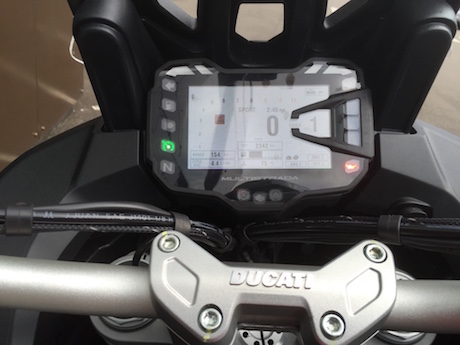
For example: the one-handed screen adjust lever is now a bit more robust and positive; the seat is lower and adjustable with tools; the TFT screen is now in colour which makes it a handy highlighter for various functions and information, although it’s still a little difficult to read in direct sun; and they have tidied up the handlebar controls for toggling through the comprehensive instrument panel and setting the infinitely adjustable controls for electronic suspension, engine modes, traction control, Bluetooth, ABS, etc.
Instead of using the indicators and another button, there is now just one button to control everything. It’s also very intuitive and with a quick training session, I was able to use all the functions and quickly remember them while out riding.
Most of the functions are also changeable on the fly, without having to stop or switch off.
Next to this multi-function button is the cruise control which is easy to use and very smooth. I also like the way they have integrated the kill and ignition switch in one.
Brakes and handling are the same as before and simply epic. Depending on your settings, they adjust perfectly to the riding conditions.
I mainly toggled between Touring and Sport, but had a quick burst on Urban and Enduro.
If the settings aren’t quite what you want you can adjust them to your exact requirements.
The only concerns I have about the bike are the finicky pannier fasteners, the close proximity required for the remote smart key to be recognised, the heat that pours on to your legs in city traffic, the absence of self-cancelling indicators and while the big mirrors provide a wide view, they are blurry at almost any revs.
Still, the way this bike makes forward progress, you won’t be bothering much with what’s behind you!
 Ducati Multistrada 1200
Ducati Multistrada 1200
- Prices: $23,990 (Multistrada), $27,990 red Multistrada S), $28,490 (white Multistrada S), plus on-road costs
- Warranty: 2 years, unlimited km
- Service: 15,000km
- Power: 117.7kW @ 9500rpm
- Torque: 136Nm @ 7500rpm
- Compression: 12.5:1
- Bore x Stroke: 106×67.9mm
- Transmission: 6-speed, chain drive, wet multiplate clutch
- Frame: tubular steel trellis
- Suspension: fully adjustable 48mm USD forks and rear shock, 170mm travel, electronic compression & rebound damping adjustment with Ducati Skyhook Suspension
- Wheels: 3.50 x 17; 6.00 x 17
- Tyres: Pirelli Scorpion Trail II 120/70 17”; 190/55 17”
- Brakes: 330mm/265mm discs, Brembo callipers, with cornering ABS
- Wet weight: 235kg
- Seat: 825 – 845mm
- Wheelbase: 1529mm
- Rake: 24°
- Trail: 109mm (4.3in)
- Fuel tank: 20 litres
- Economy: 4.9L/100km (claimed), 4.5L/100km (tested)


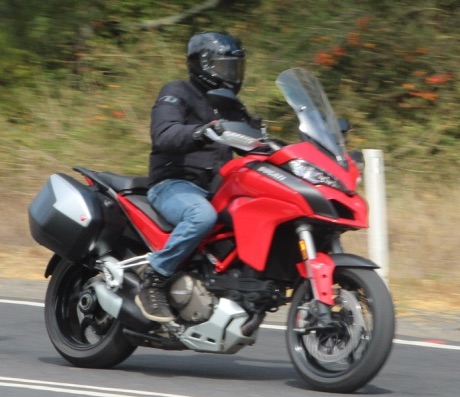
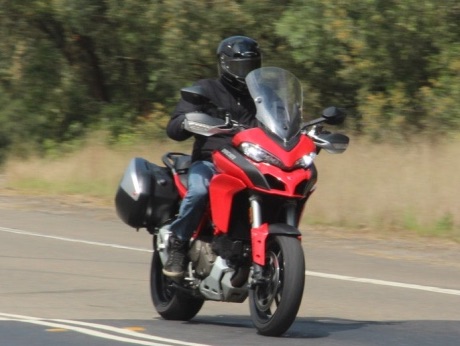
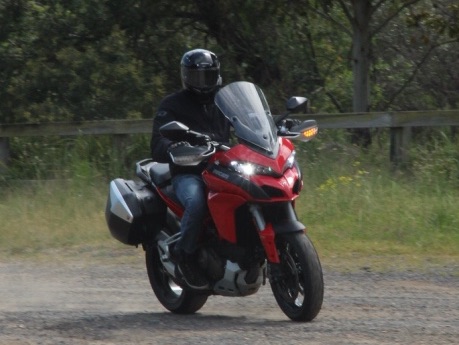
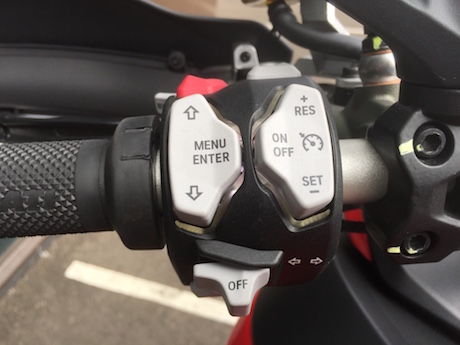
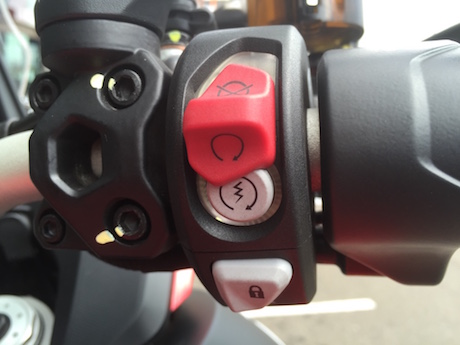
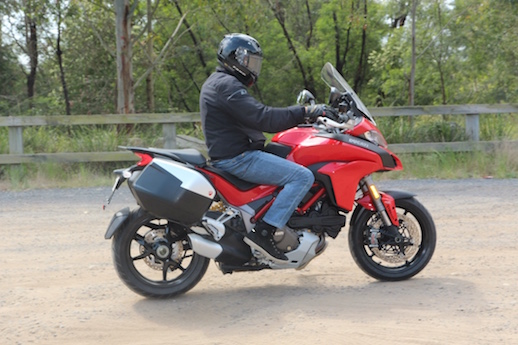 Ducati Multistrada 1200
Ducati Multistrada 1200